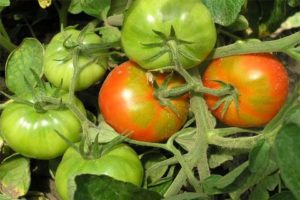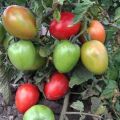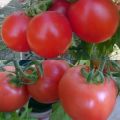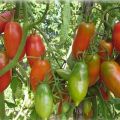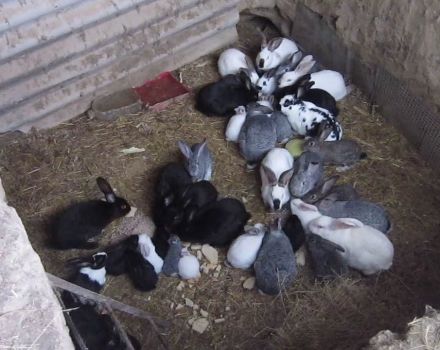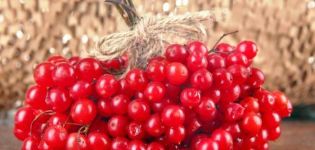Description of the variety tomato Magnus, characteristics and cultivation
A description of the tomato Magnus f1, his photos and a story about the cultivation of this hybrid will be presented below.
Most often, vegetable growers want to plant early varieties of vegetables, including tomatoes, in their beds, but they cannot always figure out which seeds are best to buy. Therefore, you should talk about the various varieties and hybrids of tomatoes so that summer residents have an idea of the best of them before purchasing seed material in a specialized store. Sellers can also provide a description of a variety with the best qualities, if summer residents tell what they would like to grow on their site.
Magnus - tomatoes of the Dutch selection, distinguished by high germination of seed material, early maturity and many other advantages. Therefore, the popularity of this imported variety among Russian vegetable growers is growing.
Description of the variety and main characteristics
The description of the Magnus tomato should start with a story about the main characteristics of the hybrid. Tomato bushes belong to the semi-determinant type, and the hybrid has absorbed only the best qualities of both types. The variety is recommended for growing in greenhouse conditions. But in the warm regions of our country it is possible to grow Magnus in the open field.
The hybrid showed itself quite well in difficult climatic conditions, especially in stressful situations. Moreover, even in such conditions, brushes with ovaries grow on the bushes. And the bushes themselves, while maintaining sufficient growth force, at the same time are quite compact.
This hybrid is classified as a super early variety - it takes about 3 months from the moment of germination to harvesting. The height of the stems is up to 1.8 m, so that they do not grow higher, the tops are usually pinched. It is also necessary to make pinching, and form the bush itself into 2 stems. Leafy shoots. The foliage is of medium size, typically tomato, emerald in color. Inflorescences are simple, racemose.
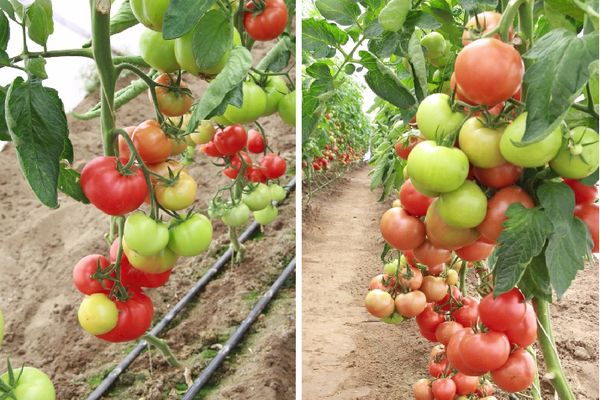
Magnus f1 - the description of this tomato should be continued with a story about ripening fruits. Ripe tomatoes are round, slightly flattened, dense, slightly ribbed. The skin is smooth, of medium thickness, not prone to cracking. At the stage of full maturity, the color of tomatoes is bright red. One ripe tomato weighs 140-150 g, taste is good. The yield of Magnus is high - up to 16 kg from 1 m² in greenhouse conditions, in the open field - up to 13.5-14 kg.
The hybrid is resistant to diseases and pests. Bushes and fruits are highly resistant to viral diseases, fusarium, verticillium and nematode. Due to the early ripening of the crop, Magnus is not susceptible to late blight.
The description of the variety will continue the story of harvest storage.Ripe tomatoes have good keeping quality - with proper storage, they retain their marketability and taste for 2-3 months. The harvested crop perfectly tolerates long-distance transportation.
Positive and negative qualities of the variety
The advantages of this hybrid include:
- early maturity;
- amicable ripening of the harvest;
- resistance to major diseases affecting nightshade vegetable plants;
- high productivity;
- the crop tolerates long-distance transportation;
- ripe fruits are perfectly stored in the cellar.
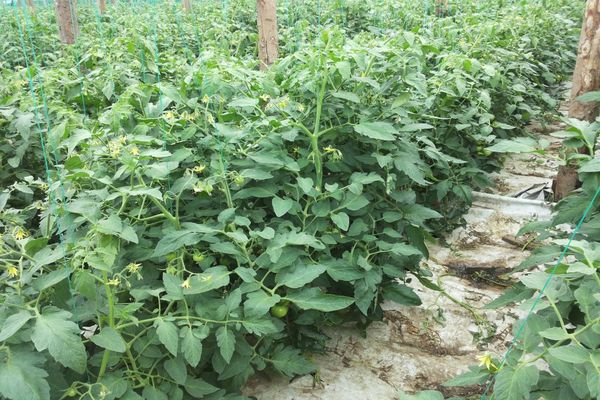
The main disadvantages of Magnus are:
- the need to pinch the tops;
- obligatory tying of shoots to trellises or supports;
- obligatory formation of bushes.
The nuances of growing
Reviews of summer residents growing Magnus f1 tomatoes say that these tomatoes perfectly tolerate weather changes, form ovaries even in stressful situations, and the fruits ripen almost simultaneously.

When planting seedlings in greenhouses or open ground, the rules of crop rotation should be observed. The best predecessors for Magnus are cucumbers, zucchini, carrots, cauliflower, herbs (parsley, dill).
For a summer resident growing this variety for the first time, there will be no problems with caring for the planted seedlings. Typically, these tomatoes require regular watering, regular loosening of row spacings while removing weeds and applying top dressing. Moreover, it will not be possible to do with one top dressing per season - usually fertilizers are applied a couple of weeks after planting the seedlings in a permanent place, a week before the beginning of flowering and during the ripening period of the crop.
